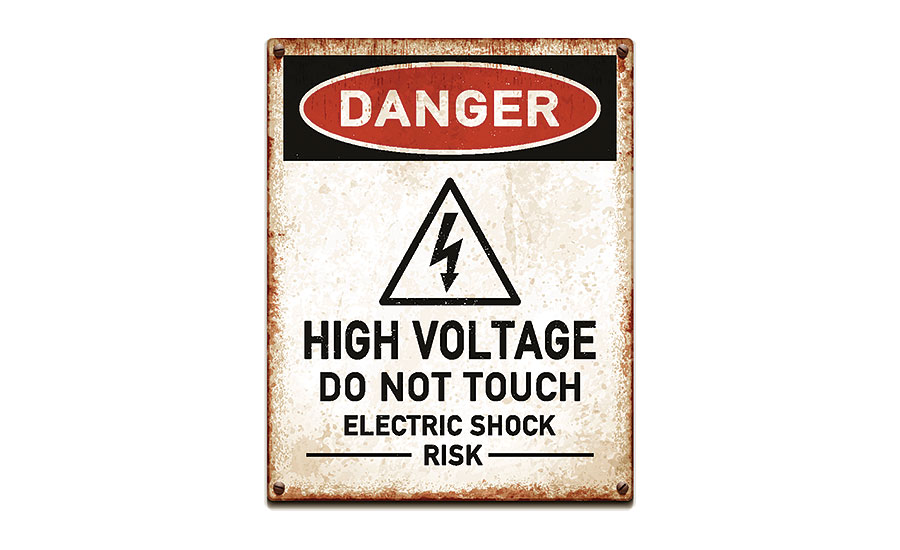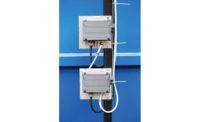2019 top standards- NFPA Voluntary Standards
NFPA 70E electrical safety standard
NFPA-70E®-2018 Standard for Electrical Safety for Employee Workplaces®

Scope
NFPA 70E® Standard for Electrical Safety in the Workplace® provides requirements for establishing a workplace that is safe from unacceptable risks associated with using electricity while working. Safety processes, policies, procedures and program controls reduce the risks associated with using electricity to an acceptable level.
NFPA 70E® defines electrical safety-related work practices. Requirements of NFPA 70E® can be adopted and implemented by employers charged with the responsibility of electrical safety plan development, implementation, and maintenance.
Why this standard is important
With the current U.S. economy speeding along, plant operations are experiencing greater overall energy use, higher system voltages, and higher available fault current. This increases the risk of exposure to shock and arc-flash hazards. Arc flash incidents can cause severe injury or death, and also disrupt business, damage equipment, create legal liability, increase insurance premiums, damage a company’s reputation, and result in regulatory fines.
Hazards addressed
NFPA 70E® requirements for safe work practices protect personnel by reducing exposure to major electrical hazards. Originally developed at OSHA's request, NFPA 70E® helps companies and employees avoid workplace injuries and fatalities due to shock, electrocution, arc flash, and arc blast, and assists in complying with OSHA 1910 Subpart S and OSHA 1926 Subpart K.
Key standard takeaways
- Job Safety Planning must be completed by a qualified person, documented, and include the following: describe the job with individual tasks; identify hazards associated with tasks; assess shock risk; assess arc flash risk; identify and document work procedures, special precautions, and energy source controls.
- Job Safety Planning guidelines: identify; ask; check; know; think; prepare for emergencies.
- Energized repair work requires an Energized Electrical Work Permit.
- Human error and its negative consequences on people, processes, work environment and equipment must be specifically addressed in the risk assessment procedure.
- Using the hierarchy of controls, your first priority must be to eliminate identified electrical hazards. Each control method that follows is considered less effective than the one preceding it.
- A step-by-step approach is detailed for how to set up an Electrically Safe Work Condition program.
- Your arc flash risk assessment uses a table that estimates the likelihood of the occurrence of an arc flash incident. This estimate calculation also applies to the incident energy analysis method, instead of just the PPE category method.
- Selection of arc-rated clothing using the incident energy analysis method is now part of the standard’s mandatory text, and guidance is provided on how to select gear when using this method.
- DC voltage shock threshold has been changed back to 50V from 100V to comply with OSHA regulations.
Best practices using standard
Risk assessments -- part of job safety planning -- are new to NFPA 70E® 2018. For both shock and arc-flash risk assessments, NFPA 70E® requirements include identifying the hazards; estimating the likelihood of occurrence of injury or damage to health and the potential severity of injury or damage to health; and determining whether additional protective measures, including the use of PPE, are required. Once an arc-flash risk assessment has been completed, it’s up to the employer to share the results with workers so that they can use the information to properly protect themselves on the job.
Hazard elimination is a focal point of NFPA 70E® 2018. The hierarchy of risk control methods is now part of the standard’s mandatory language. When implementing safety-related work practices, the standard states hazard elimination shall be the first priority. Taking steps to mitigate a hazard may not be enough to protect employees and property and reduce your liability. Risk control methods essentially break down into six areas: elimination, substitution, engineering controls, warnings, administrative controls, and PPE.
Employee training is essential for employees to be able to identify and assess electrical and arc flash hazards and determine how to eliminate or mitigate them. NFPA 70E® 2018 consolidates training requirements previously mentioned throughout the standard into a new, comprehensive section. In addition to specifying requirements for becoming qualified, this section covers retraining, training delivery methods, and documentation. Training minimizes costly equipment failures and unplanned shutdowns, and helps overcome insufficient worker knowledge that often leads to electrical accidents.
Human and operational performance (HOP) is growing in popularity as a critical consideration in risk reduction programming. The 2018 edition of NFPA 70E® introduces human factors such as human error into the mandatory risk assessment that is part of the job safety planning process. An informational annex titled, “Human Performance and Workplace Electrical Safety” is included in the standard.
Work audits are not a new 70E®requirement, but help assess training effectiveness. Effective audits ensure each employee complies with safety-related work practices. Audits provide the opportunity to observe and engage each worker to gain insight whether the worker has the qualifications needed to stay safe on the job.
News update
In an exclusive ISHN webinar in September, 2018, Hugh Hoagland of e-Hazard Management www.e-hazard.com offered a preview of significant changes under review for the next revision of NFPA 70E® in 2021. They include:
- Blended learning may be allowed to meet the “classroom” component of training. OSHA requires that a Subject Matter Expert (SME) must be involved and available for answering questions.
- A balaclava hood is not required to cover the nose. It is always worn beneath a face shield. Proposed language more clearly separates balaclava from “flash suit hood.”
- Proposed language clearly requires protecting extension cords with GFCI. As a best practice, the standard will clarify that GFCIs with more than 5 mA trip current are unacceptable personnel protection typical for >125V GFCIs.
- DI and leather are the only types of footwear currently allowed. The 70E® committee recommended adding other footwear if tested to assure it will not melt and drip in the exposure levels. There is future potential for developing testing standards to determine arc-ratings for footwear.
- More guidance will be given on human performance. Assessing a worker’s condition should include work hours, heat and cold exposure, psychological tendencies and work experience. Human factors relating to use of equipment will consider use of distance-increasing devices such as remote racking; and standardization of equipment to avoid errors – potentially standardizing meters and tools.
- Proposed language clarifies that PPE is only required to protect the parts of the body that are inside the arc flash boundary. For example, you could use an arc-rated sleeve and arc-rated glove to operate a switch inside an arc flash boundary set at less than length of the arm. This allows for PPE reduction in some operations when only the arm might be potentially exposed.
- Proposed clarification on PPE layering: non-arc rated underlayers are allowed only if they are non-melting (cotton, wool, silk, leather). In real life, cotton undergarments may add some protection but may also ignite, causing serious burns. Layers of arc-rated garments may offer increased protection; layers must be tested as a system to provide an increased rating. Non-arc rated outer layers are prohibited over arc-rated layers. The arc rating of an outer layer does not impact the rating of arc rated underlayers.
Looking for a reprint of this article?
From high-res PDFs to custom plaques, order your copy today!





